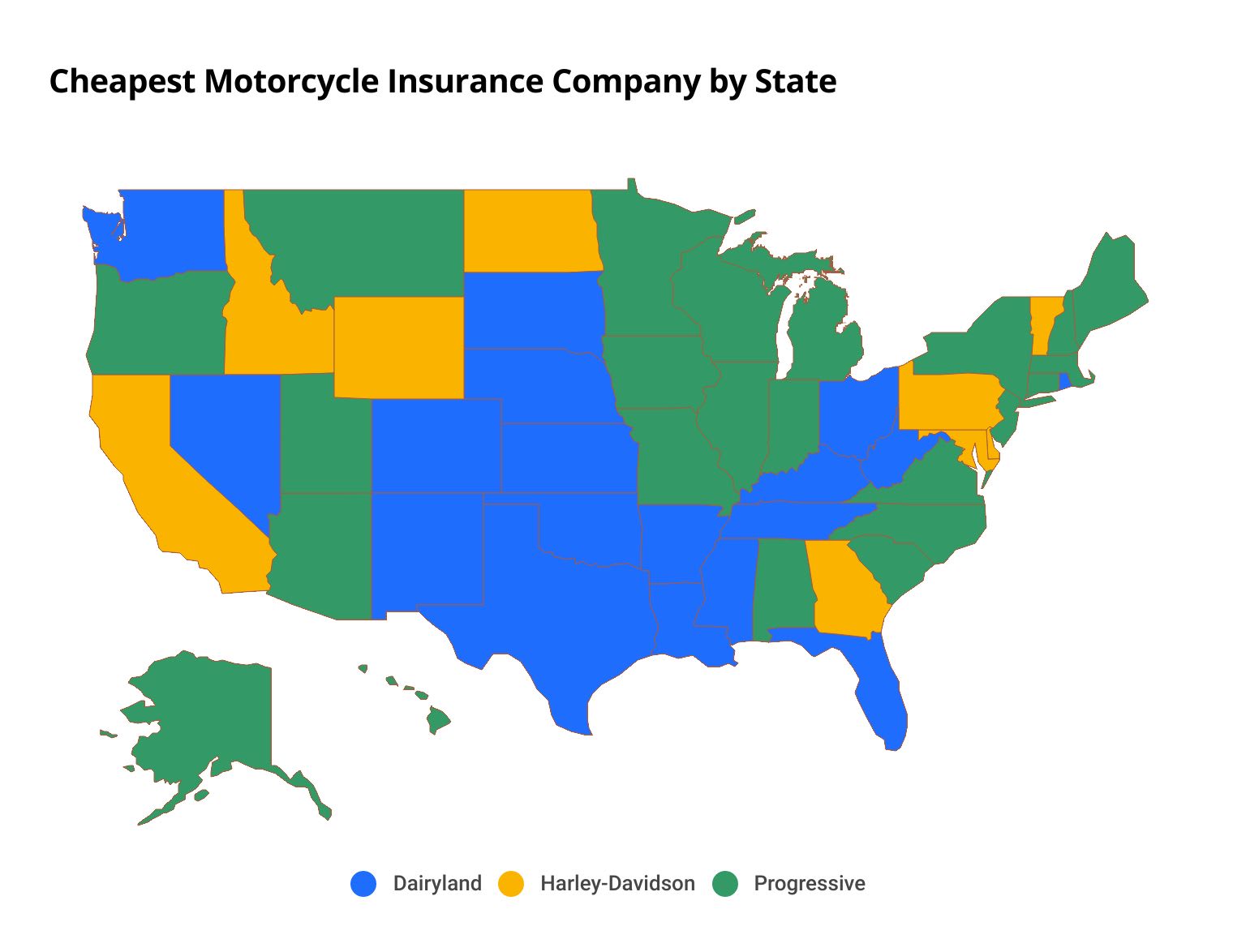Best Cheap Car Insurance for Married & Unmarried Couples
Your relationship status affects how much you pay for car insurance. Married drivers pay an average of $8 less per month than single... Read More
Find Cheap Motorcycle Insurance Quotes in Your Area

Understand how motorcycle insurance can protect you and your ride.
Collision coverage
Collision coverage pays for damage to your bike if you hit another vehicle or object.
Comprehensive coverage
Comprehensive coverage pays to fix or replace your bike after vandalism, theft or damage by an "act of God," like hail.
Bodily injury liability
Bodily injury protection pays for the medical bills of other drivers and passengers if you cause an accident.
Property damage liability
Property damage liability covers any damage you cause to someone else's vehicle or property.
Find the best motorcycle insurance in your state.

The average cost of motorcycle insurance is $33 per month, or $399 per year, for full coverage. Three main factors affect rates: where you live, the amount of coverage you need and your riding history.
The cheapest motorcycle insurance companies are typically Dairyland, Progressive and Harley-Davidson.
However, rates vary by state. So the cheapest company near you could differ from the best option nationally. That's why comparing quotes from multiple companies is important when shopping for motorcycle insurance.
No single motorcycle insurance company is best for every rider. Major companies like Progressive and Geico offer standard motorcycle insurance, with discounts for bundling your auto and homeowners insurance. On the other hand, specialty companies like Dairyland and Harley-Davidson provide more extensive coverage to dedicated riders.
The best way to find cheap motorcycle insurance is by comparing quotes from multiple companies. You should also look for discounts. Many companies offer savings for bundling your motorcycle and auto insurance, making automatic payments or taking a motorcycle safety course.
You can get the cheapest motorcycle insurance rates by buying the minimum coverage required in your state. Most states only require a small amount of liability coverage for bodily injury and property damage. However, you won't have any coverage for your bike if you cause a crash. This may not be the best choice if you can't afford to replace your bike after an accident.
Every state has its own laws, but it's generally harder to insure your bike if you don't have a valid motorcycle license or endorsement. Most insurance companies require your license info. Companies that don't may treat you as a riskier customer and charge you more for coverage.
Your relationship status affects how much you pay for car insurance. Married drivers pay an average of $8 less per month than single... Read More
Nearly two-thirds who have purchased coverage through the health care marketplace have experienced challenges, leading to calls for major... Read More
Consumers who cut their insurance coverage most commonly reduced or eliminated their health insurance, followed by auto and dental... Read More
Homeowners insurance rates climbed by more than 34% in the state from 2016 to the present — the highest in the... Read More
Of those who have driven while under the influence, 28% have done so within the past six... Read More
ValuePenguin finds that skiing and snowboarding account for the largest percentage of injuries across the winter activities we... Read More
If your car is more than a decade old, it may not be worth it to have car insurance that will replace the vehicle after an... Read More
75% admit to having left lights on overnight — in many cases more than once or twice — despite potential fire risks.... Read More
ValuePenguin took a deep dive into analyzing travel and crash fatalities during peak holidays. Time of day, alcohol and speed all play... Read More
To find the average cost of motorcycle insurance and the cheapest companies, ValuePenguin collected quotes across all 50 states in the U.S. Rates are for a 45-year-old single man who owns a 2018 Honda CMX500 Rebel.
Quotes are for a full coverage policy, which includes higher liability limits than state requirements along with comprehensive and collision coverage.